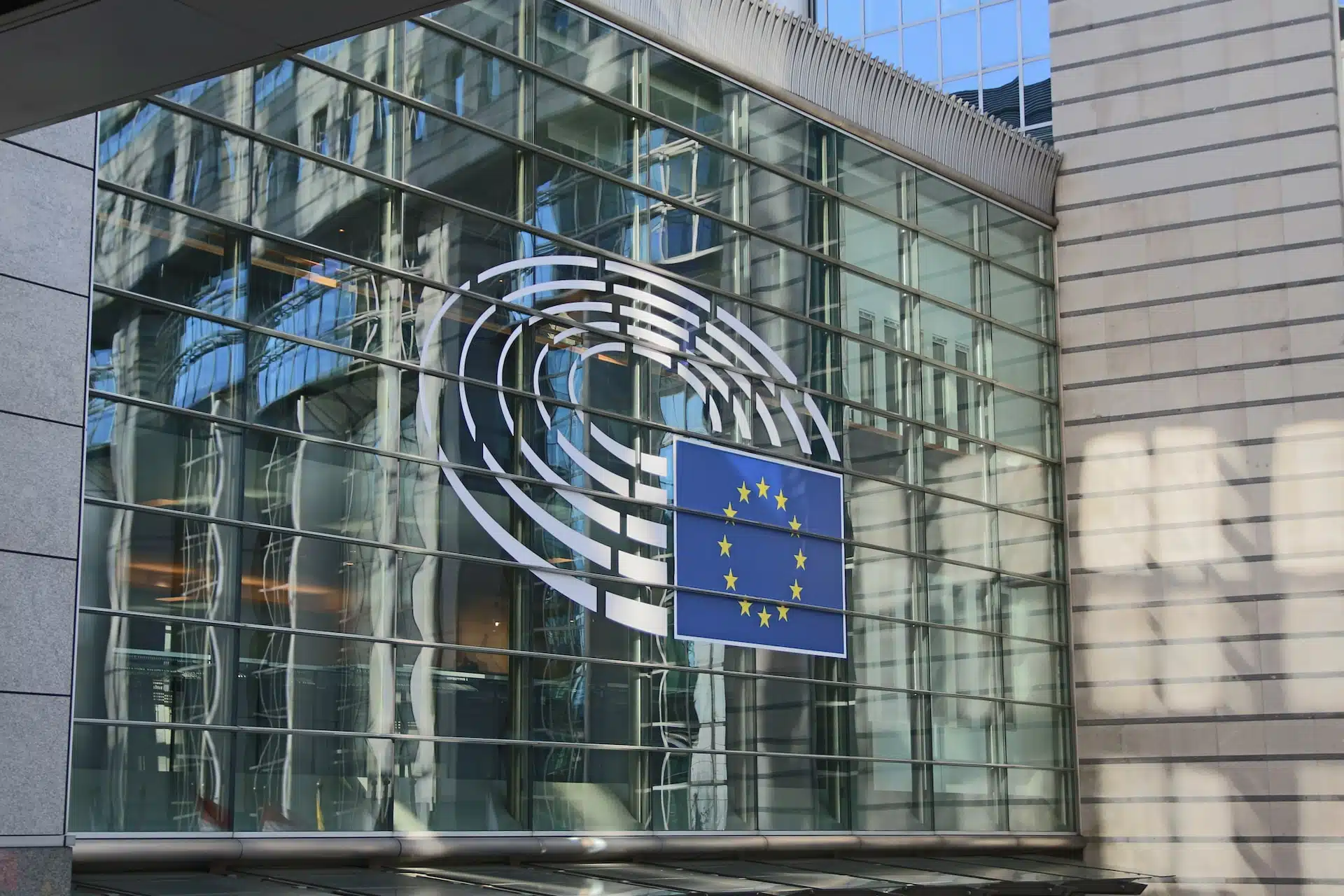
A Recap of EU Sustainability News in 2021: What’s Happened and What’s Next
2021 has been a big year for sustainability in public affairs.
With the rescheduled COP26 summit closing out the year, environmental sustainability is top of mind in the public sphere. It’s also never been higher on the EU’s agenda.
This year, we’ve seen the EU Commission propose several new policies designed to fulfil the European Green Deal goals of climate neutrality and ambitions to #buildbackbetter and more sustainably after the COVID-19 crisis.
2022 looks set to be another important year for sustainability legislation, with many key initiatives moving to the co-decision process with the EU Parliament and Council.
Organisations need to get up to speed on what’s happening so they can get prepared and have their say next year. It’s not too late to have your voice heard and shape the EU’s final sustainability policies. But you do need to get informed.
This article recaps the most important sustainability news from 2021 so that companies can catch up and get ready to engage with the EU from 2022 onwards. We’ll also give you a preview of what to expect next year. Ready? Let’s go!
Want someone with deep experience and EU connections to help guide your sustainability strategy and engagement with public affairs? Get in touch!
Top 7 EU sustainability topics in 2021
Here are some of the biggest updates and trending topics in EU sustainability and climate policy this year:
1. Sustainable Product Initiative
The Sustainable Product Initiative (SPI) is set to transform every aspect of product design, production, marketing, and aftercare. The SPI proposed by the EU Commission this year expanded the scope of 2009’s Ecodesign Directive: it will apply to all companies who sell products on the European market and includes all kinds of products, from textiles to electronics, chemicals, and furniture.
The key pillars of the Sustainable Product Initiative are:
- Sustainable design
The SPI will push companies to prioritize longevity and circularity in product design, ensuring they manufacture products that can be reused, repaired, and upgraded.
- Circular models (like product-as-a-service)
Closely linked with the Circular Economy Action Plan, the SPI aims to incentivise consumers and businesses to use circular business models, like product-as-a-service frameworks, that emphasise reuse through rental reuse and repairs.
- Life cycle tracking
The Sustainable Product Initiative proposes the use of life cycle analysis (LCA) methodologies and tools like digital product passports so that organisations can track the environmental impact of their products from raw material right through to disposal or recycling.
The SPI is also set to ban the destruction of unsold goods, limiting overproduction, and sets out criteria for waste shipment and classification.
Once the EU Commission has published the SPI, it will then move to the European Commission and Council who have the final say in amending and approving the initiative.
Get all the details in our full article on the Sustainable Product Initiative.
2. Sustainable Textiles Strategy
The EU Strategy for Sustainable Textiles aims to accelerate sustainability – and competitiveness – in the fashion industry. The Commission held a public consultation on the strategy in 2021; here’s what came up:
- Circularity and ecodesign in textiles
There’s a big focus on incentives for circular business models and circular product design that makes apparel reparable and easy to disassemble and recycle. The strategy will classify different materials and encourage companies to use natural, sustainably grown fibres and reduce harmful microfibres.
- Improved material recirculation
The strategy offers a strong vision for waste management and recycling, including clear definitions and classifications for waste, end-of-waste, and recyclability criteria as well as decreased chemicals use. The EU aims to incentivize effective technologies for scalable material recirculation.
- Increased transparency for consumers across the value chain
In line with upcoming green claims legislation, the sustainable textiles initiative promotes consumer empowerment with an emphasis on increasing the reliability and transparency of sustainability information.
- Due diligence on social impacts
The strategy will propose due diligence guidelines that ask textile companies to commit to social sustainability by respecting fair wages, fair working conditions, and labour and human rights.
We should see the EU Commission adopt the strategy in early 2022.
Take a look at our article with all the latest updates on the Sustainable Textiles Strategy.
3. Green Claims Policy
New initiatives on empowering consumers and green claims will be released through a package including the Sustainable Product Initiative and New Consumer Agenda.
The legislation is set to tackle “greenwashing” and ensure that companies offer transparent, reliable information on the sustainability and environmental impact of their products.
The most recent updates from the EU signal the importance of connecting transparency with product traceability (including digital product passports) and an emphasis on social sustainability as well as environmental sustainability.
The EU also launched a voluntary Green Consumption Pledge, in which participating companies commit to making sustainable choices and offering transparent product information through Product and Organizational Environmental Footprint (OEF and PEF) methodologies. A new set of companies can participate in the pledge in 2022.
Take a look at our in-depth article on the latest news related to green claims.
4. Corporate Sustainability Reporting Directive
This year, the EU Commission proposed the Corporate Sustainability Reporting Directive (CSRD) to expand the scope of 2014’s Non-Financial Reporting Directive (NFRD).
The CSRD will mandate a culture where companies report sustainability data in a transparent, reliable, and comparable way. This is critical to allow investors and other stakeholders to evaluate corporate sustainability information and will drive investment towards green companies.
Here are the key points:
- Applies to all large companies
- Standardises reporting requirements so it’s easy to compare sustainability performance across companies
- Required third-party audits on reports
- Emphasises the importance of accessible digital reporting formats and systems
The EU Council and Parliament will be considering the CSRD throughout the next year, and we’re expecting it to be approved by the end of 2022.
Read Ohana’s detailed account of the CSRD on our blog.
5. Secondary Raw Materials Market
Sustainable waste management – and the development of a strong secondary raw materials market – was a key topic for the EU in 2021.
The Sustainable Product Initiative and revisions of the EU Waste Shipments regulation aim to minimize waste and ensure it is treated properly so that it doesn’t harm people or the environment. But this year, the EU was clearer than ever that a circular approach is needed. Cutting down on waste won’t be enough: EU companies will need to use waste as a resource, transforming products into new raw material for production.
Several challenges have emerged. It’s currently expensive to recycle, as waste recycling technologies aren’t yet scalable, and product design doesn’t take account of the need for secondary raw materials.
It’s crucial that companies engage with the EU Parliament and Council in 2022 to ensure that final policies provide companies with the incentives and resources they need to create a sustainable secondary raw materials market.
Learn all about the challenges and solutions to the secondary raw materials market on our blog.
6. Sustainable Chemicals Strategy
The EU’s Chemicals Strategy for Sustainability will mean a drastic change in legislation around which chemicals companies can use, and the information they must track and share about chemicals in their products.
The Sustainable Products Initiative addresses the need for chemicals to be safe and sustainable by design and the Sustainable Textiles Strategy addresses chemicals used in the textiles industry that hamper recyclability.
As part of the strategy, the EU is reviewing two key chemicals regulations, REACH (Registration, Evaluation, Authorisation, and Restriction of Chemicals) and CLP (Classification, Labelling, and Packing of hazardous substances).
As well as aiming to make chemicals safe, sustainable, and recyclable by design, the new chemicals strategy will propose new hazard classes, regulate the cocktail effect of mixing chemicals, and seek to phase out PFAS (per- and polyfluoroalkyl substances).
Get ready for the publication of new CLP regulations next year, and for the REACH revisions public consultation, which opens in early 2022.
See our summary of the sustainable chemicals strategy for more details.
7. Taxonomy for Sustainable Finance
The EU taxonomy for sustainable activities is part of a Sustainable Finance package geared towards encouraging sustainable economic investments. The taxonomy provides a clear, standardised list of criteria for defining climate-friendly economic activities, which investors and companies can use to measure how green their investments are.
Since the Taxonomy Regulation entered into force in 2020, the EU has been hard at work preparing Climate Delegated Acts to define the exact technical screening criteria for sustainable activities. The first Delegated Act will come into force at the start of 2022 and the second Delegated Act will be published by mid-2022.
The taxonomy assesses sustainability across six environmental goals:
- Climate change mitigation
- Climate change adaptation
- Sustainable use and protection of water and marine resources
- Transition to a circular economy including recycling
- Pollution prevention and control
- Protection and restoration of biodiversity and ecosystems.
Companies will need to measure and disclose the extent to which their activities align with these criteria. Right now, disclosure is only obligatory for large corporate organisations. But with other legislation like the Corporate Sustainability Reporting Directive in the works, a wider range of companies will likely be affected.
It will be increasingly important for all businesses to be taxonomy-aligned to attract financing and assess their overall progress on environmental goals.
We wrote a full breakdown of the EU taxonomy earlier this year – take a look.
What’s next? Looking ahead to 2022
Big changes are afoot in the EU. France is about to take over the EU Council presidency, and the speech recently given by state secretariat Clément Beaune emphasised the ambition to make the EU fit for the future through three pillars: recovery, power, and a sense of belonging. There will be a strong focus on proactively driving the digital and green transformation, taking action on climate and health risks, and ensuring EU industry remains competitive.
So how can companies get involved with public affairs this coming year?
In 2021, all eyes were on the EU Commission as they proposed legislation, ran impact assessments, and held consultations and workshops on key sustainability issues.
Next year, many of these policy drafts will finally reach the EU Parliament and Council who will negotiate, adapt, and finally approve the legislation.
That means organisations who want to influence final EU policy should prepare to get involved with the Parliament and Council on the co-decision process.
Get set to engage with the following key sustainability initiatives this year:
- Due diligence- expected to be tabled by the EU Commission on 15th February
- Sustainable Textile Strategy (expected to be tabled on 30 March )
- Sustainable Product Initiative (expected to be tabled on 30 March)
- Green claims and empowering consumers policy (expected to be tabled on 30 March)
- Packaging and packing waste directive (expected to be tabled on 20 July)
- CLP regulation (expected on 13 July)
- Taxonomy Delegated Act on the Circular Economy (mid-2022 on)
- Microplastics regulations (mid-2022 on)
The sustainability legislation on the table will transform how all companies do business in the EU. That means it’s crucial that you get up to speed on what’s happening and prepare to get your voice heard in 2022.
Remember – Ohana’s here to help! We’ll be providing lots of content next year to keep you posted with what’s happening in the EU so you can get involved in shaping sustainability policy to be proud of.
Happy new year!
Want someone with deep experience and EU connections to help guide your sustainability strategy and engagement with public affairs? Get in touch!
Join our newsletter to keep up to date with the latest news and information coming out of the EU.


